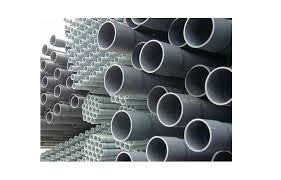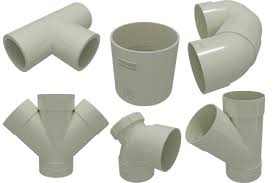
PPR-C Pipes

PVC Pipes

PE Pipes
PPR-C Pipes
POLYPROPYLENE RANDON COPOLYMER
Our PPR-C pipes are made of the highest quality PPR-C material, which is tested under extreme conditions & conforms to global quality standards for quality; our PPRC pipes are reliable & designed to give levels of performance in the face of the harshest of elements. Conforming to world-class standards of quality, they are extremely reliable & offer convenient & reliable installation in any plumbing system.
Our PPR-C Pipes has an excellent heat stability and corrosion resistance featuring no deformation, no fading and aging, longer operating life, which makes our PPR-C pipes the most reliable plumbing system for the hot and cold water applications, our PPR-C pipes could be utilized in a variety of applications such as:
Portable Water Pipes networks for Cold and Hot water installations i.e. in residential buildings, hospitals, hotels, offices and school buildings etc.
Pipes networks for rainwater utilization systems
Pipes networks for swimming pool facilities
Pipes networks for solar plants
Pipes networks in agriculture and horticulture
Heating Pipes for residential houses
Pipes networks for industry i.e. transport of aggressive fluids (acids, leys, etc)
Insertion pipe Relining
BENEFITS OF POLYPROPYLENE RANDON COPOLYMER
Our PPR-C pipes provide a large number of benefits in handling cold and hot water; amongst many of its features are:
Heat preservation and energy saving abilities. The heat conductivity of PPR-C pipes is much lesser than metals and hence offers significantly high levels of heat preservation for transported fluids.
Long durability due to the high resistance to aggressive elements, which gives the pipes extremely long service life.
Easy connectivity over a complex network.
No perforation caused by electrical currents.
No furring while cutting.
Cost effective pipeline network.
Safe environment with recyclable ability.
Incomparable smooth and porosity – free internal surface of both pipes and fittings, which results in a very low pressure loss
Nontoxic and Physiologically harmless material
Resistance to bacteriological attack thus enabling safe potable water transfers.
Resistance to wide range of chemicals and so corrosion avoided in service lines.
Good impact strength so as to be used in all environments and around buildings.
High acoustic insulation against fluid noise. The fluid flow and hydraulic shocks within the building create the noise which can be very well avoided by the noise absorption ability of PPRC materials.
Light weight compared to the metallic piping systems (1/9 of the steel specific gravity).
Convenient and reliable installation methods increasing labor productivity and significant cost savings
PVC Pipes
PVC pipes are made out of a material known as polyvinyl chloride, a durable, strong plastic-like substance. Pipes are constructed from this material and used in various applications from plumbing to construction. The pipe is designed to be universal. All pipes are designed around specific requirements to ensure that multiple pipe sections will fit together. The ends of the pipe can either be smooth or grooved (similar to a screw). Additionally, there are several different pipe sizes ranging from very small (one-fourth inch) to very large (10 feet). Currently, PVC piping counts for the majority of plumbing in the Afghanistan. and is the preferred standard for new construction.
PVC pipes are created by starting with a molten mixture of the material and shaping them around a cast. The casts are made to be the exact width of the pipe. The mixture is poured into a cast and surrounded by an outer shell. The complete set is then placed into an oven to be cooked. Once the pipe has solidified, it is cooled and moved into finishing. Sections of the pipe are then cut based on common sizes and needs. The sections are then coated in a chlorine solution to prevent harmful bacteria from growing during shipping and use. Once the coating is dried, the ends of each section are finished. If the pipe is a smooth connection, the top of the pipe is sanded down to ensure a perfectly flat surface. For fitted pipes, a machine engraves a series of grooves into the pipe. As the grooves are cut, high-pressured water is sprayed on the pipe to remove excess PVC fragments. After the grooves are added, the ends are smooth and the sections are sent into testing.
PE Pipes
High density polyethylene – HDPE – is a very popular material for water pipes. It is
- resistant to chemicals
- easy and light weighted
- long living
- low friction
- relatively cheap
- flexible
- sun resistant
PE pipes can be used in range of temperatures -40 oC to 60 oC considering the change of operating pressure. Typically the standard specification identifies class of a HDPE pipe is by the nominal pressure class – PN – up to PN 20 or 20 bar. HDPE pipe can also be classified by the material used – PE 100, PE 80, PE63, PE 40 or PE 32.